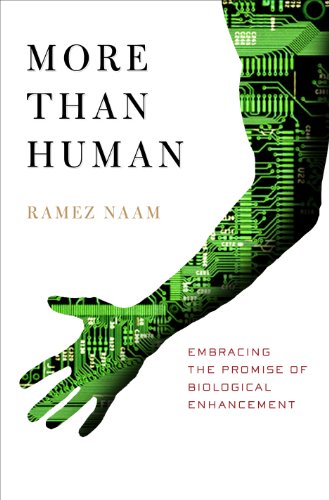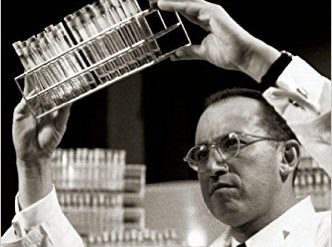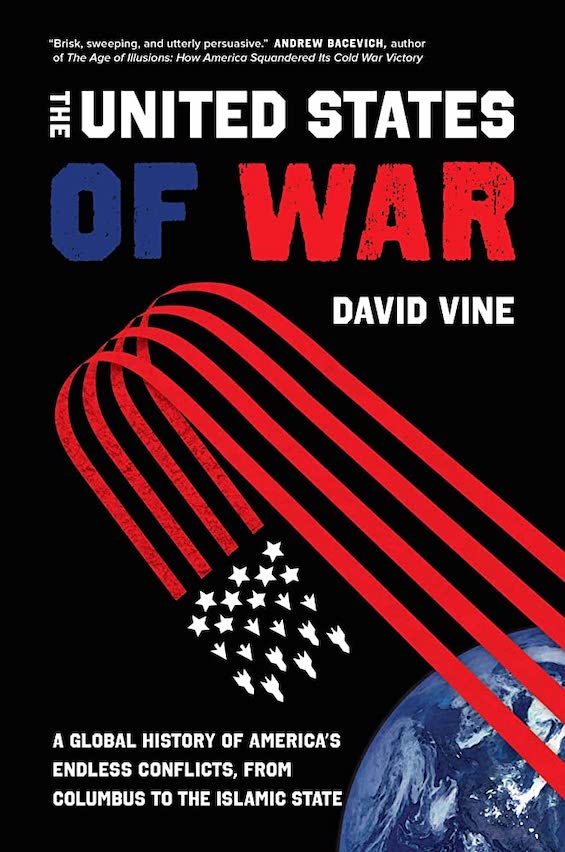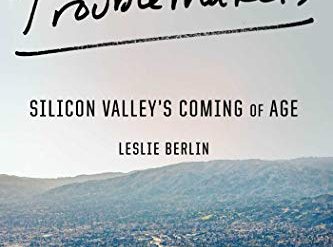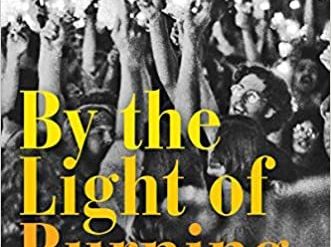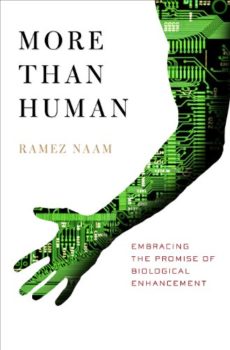
If you follow biomedical news in at least a cursory fashion, you may be aware of current work with brain implants. Researchers have proven in laboratories that they can help the blind to see, the deaf to hear, and stroke patients to communicate when they’re otherwise unable to do so. But Ramez Naam’s More Than Human will give you a sense of what these techniques can do for people who aren’t blind, deaf, or locked in to immobility. In his thought-provoking book, Naam lays out the proof that scientists will soon understand how to make humans smarter, stronger, and healthier.
How to make humans smarter, stronger, and healthier
In More Than Human, Naam focuses on recent efforts by “[r]searchers looking for ways to heal the sick or injured or preserve the health of the elderly [that] have stumbled on techniques that might enhance human abilities.” For example, contemporary experiments in gene therapy employing Nerve Growth Factor (NGF) are designed to combat Alzheimer’s Disease and other diseases. (Alzheimer’s afflicts one out of every ten people aged sixty-five or older and almost half of those over eighty-five.) Similar techniques hold promise of boosting learning and memory. Yes, making humans smarter. Similarly, researchers seeking to help patients locked in by stroke to communicate are opening up the possibility of telepathic links among healthy people.
More Than Human: Embracing the Promise of Biological Enhancement by Ramez Naam (2012) 232 pages ★★★★★
Ultimately, Naam predicts, this research will lead to “new communication abilities [that] could scale . . . to groups . . . When sensations, emotions, and ideas become digital, it’s as easy to share them with a dozen friends, or a thousand strangers, as it is to send them to one person. Just as we can email our words, or place them on websites, or send them in instant messages or chat rooms, we’ll be able to broadcast the inner states of our minds.” Just think for a minute what implications this might hold for actors and singers in our future (let along the rest of us)!
Refuting the critics
Naam is careful to acknowledge the leading critics of the developments he writes about in More Than Human. Among them are environmentalist Bill McKibben, physician Leon Kass, political scientist Francis Fukuyama, and bioethicist George Annas. All their criticism rests on a fundamental conviction that tinkering with our DNA or in any way attempting to make humans smarter, stronger, and healthier disrupts the natural order. Others insist that research along the lines Naam describes constitutes a turn toward eugenics. Yet, as the author notes, “the only people advocating state control over the genetic makeup of the population are those who would like to see genetic enhancement techniques prohibited.”
Naam methodically disputes the critics’ arguments. He cites the innumerable ways that science has made us smarter, stronger, and healthier with vaccinations, antibiotics, antidepressants, prosthetic limbs, LASIK surgery, and innumerable other changes in the natural order that most of us accept unquestioningly today. More to the point, every one of these scientific advances was reviled when first revealed to the public. In some cases, medical practitioners were unable to implement such advances for years because of the public outcry.
Our universe will be populated by descendants we might not recognize
In the final chapter of More Than Human, Naam steps off into the realm of speculation. There, he will paint you a picture of a future for the human race that is based on contemporary research but will stretch your mind millions of years ahead. Witness: “At some point, one hundred years or one thousand years or one million years from now, our world and perhaps this corner of our universe will be populated by descendants that we might not recognize . . . [T]hese descendants of ours will be fantastically diverse. Where we are all alike in the basic forms of our minds and bodies, they will exist in a plethora of forms. Humanity will have given birth, not to one new species, not to a dozen new species, but to thousands, or millions. We will have spawned a new explosion of life as sudden and momentous as the Cambrian Explosion.”
An edition marred by typos and misspellings
Unfortunately, the Kindle edition I read was marred by innumerable typographical errors and misspellings. For me as an editor for several decades, the experience was jarring. Other books I’ve read on the Kindle display similar problems, but More Than Human is the worst offender I’ve seen.
About the author
Ramez Naam is a computer scientist, futurist, angel investor, and award-winning author. He has written five books, including the extraordinary Nexus science fiction trilogy. He is a dynamic public speaker, as you can see in this 2014 Ted talk entitled “Linking Human Brains.”
For related reading
Previously I reviewed the three novels in Ramez Naam’s mind-bending Nexus Trilogy:
- Nexus—The post-human future explored in an outstanding SF novel
- Crux—Not a single dull page in this science-based sci-fi thriller
- Apex—In the conclusion to a brilliant sci-fi trilogy, a new post-human species emerges
You might also be interested in 20 good nonfiction books about the future and Two dozen good books about artificial intelligence.
And this is one of the Best books about innovation.
And you can always find my most popular reviews, and the most recent ones, on the Home Page.

